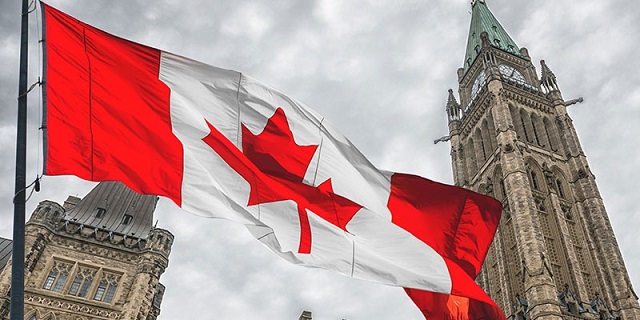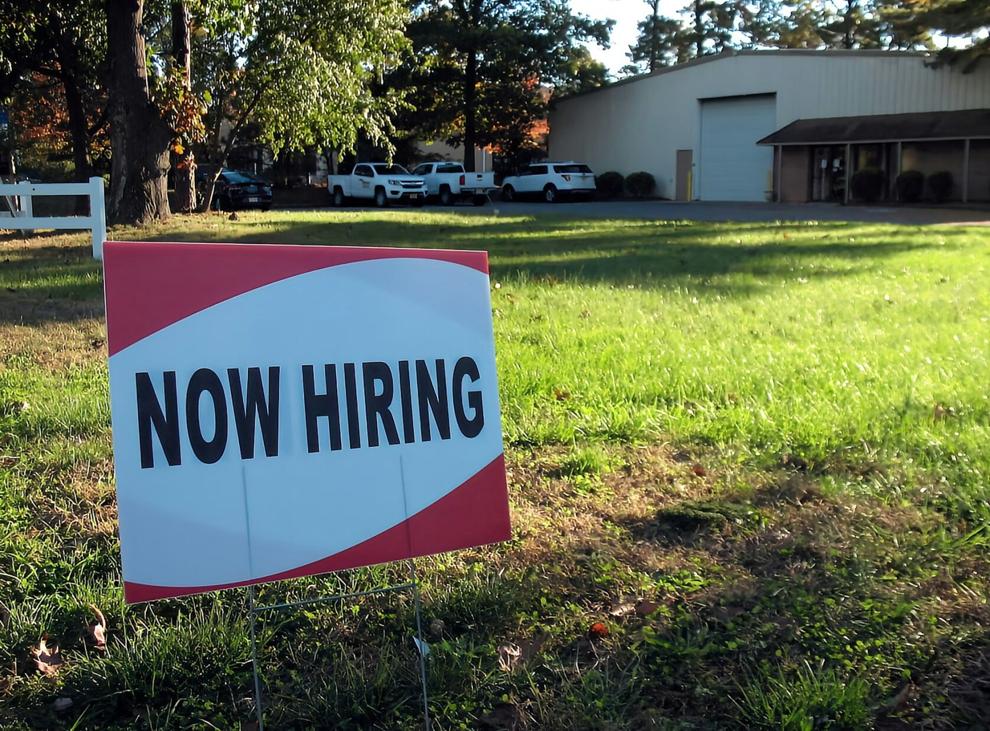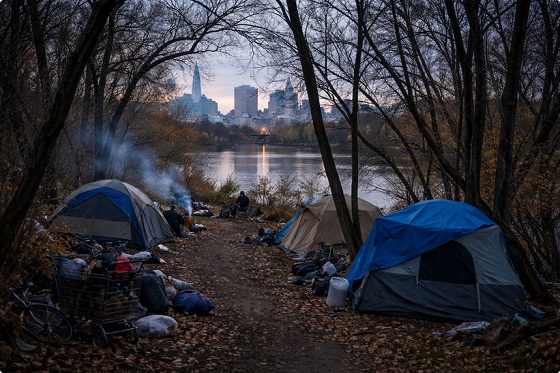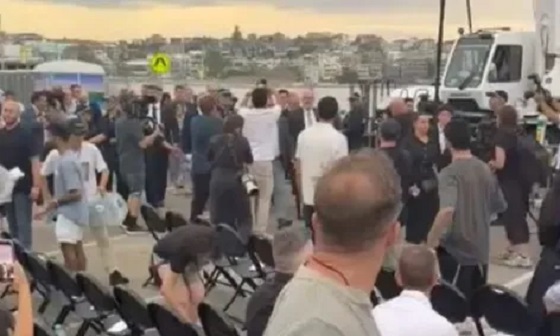Economy
Ottawa’s Regulatory Assault on the Extraction Sector and Its Impact on Investment

From the Fraser Institute
Business investment is a foundational requirement for a prosperous economy. It provides the resources to establish new companies, expand existing ones, and invest in new factories, machinery, and technologies. Business investment in Canada has declined markedly for over a decade. It is a major reason why Canadian living standards are stagnating in absolute terms and declining relative to many peer countries, particularly the United States.1
One factor behind declining business investment is the heavy regulatory burden imposed by the current federal government on the extraction sector, which includes: mining, quarrying, and oil and gas. Since 1990, this sector averaged 17.3 percent of total non-residential business investment, and reached as high as 28.7 percent of the total in 2013.2
The federal government has been particularly critical of the oil and gas sector. As an example of such sentiment, in a 2017 speech Prime Minister Trudeau said it would take time to “phase out” the oil sands, indicating the long-term goal of the federal government to eliminate the fossil fuel industry (Muzyka, 2017). The prime minister’s comments were followed by a number of new regulations that directly or indirectly targeted the oil and gas sector:
• In 2019, Bill C-69 amended and introduced federal acts to overhaul the governmental review process for approving major infrastructure projects (Parliament of Canada, 2018). The changes were heavily criticized for prolonging the already lengthy approval process, increasing uncertainty, and further politicizing the process (Green, 2019).
• In 2019, Bill C-48 changed regulations for vessels transporting oil to and from ports on British Columbia’s northern coast, effectively banning such shipments and thus limiting the ability of Canadian firms to export (Parliament of Canada, 2019).
• Indications from the federal government that a mandatory hard cap on GHG emissions would eventually be introduced for the oil and gas sector. In 2023, such a cap was introduced (Kane and Orland, 2023), excluding other GHG emitting sectors of the economy (Watson, 2022).
• In early 2023, the government announced new fuel regulations, which will further increase the cost of fuels beyond the carbon tax (ECCC, 2023).
• In late 2023, with limited consultation with industry or the provinces, the Trudeau government announced major new regulations for methane emissions in the oil and gas sector, which will almost inevitably raise costs and curtail production (Tasker, 2016).
The growing regulatory burden has a number of implications that impede or even prohibit oil and gas investment, by increasing costs and uncertainty, making it less attractive to invest in Canada. Both a 2022 survey of mining companies and a 2023 survey of petroleum companies identified the same three risks as inhibiting investment in Canadian provinces—uncertainty over disputed land claims, protected areas, and environmental regulations.3
It is also important to recognize that the Trudeau government introduced a carbon tax in 2016, which conceptually should replace regulations related to greenhouse gas (GHG) emissions such as those listed previously rather than be an additional policy lever used to manage GHG emissions.4
The regulations discussed above, as well as direct decisions by the federal government had tangible effects on the oil and gas sector:
• In late 2016, the Northern Gateway pipeline running from northern Alberta to Kitimat, British Columbia was cancelled by the Trudeau government, further limiting the ability of firms in Alberta to get their products to export markets (Tasker, 2016).
• In 2017, TransCanada Corp. cancelled its $15.7 billion Energy East pipeline, which would have transported oil from Alberta to Saint John, New Brunswick. The project was cancelled in large measure due to changes in national policy regarding the approval of large infrastructure projects (Canadian Press, 2017).
• While the Trans Mountain pipeline from Edmonton to Burnaby, BC was approved, Kinder Morgan exited the project in 2018 due to uncertainties and questions about the economics of the project, forcing the Trudeau government to take the ownership. The cost of the project has since increased by more than four times the original estimate to $30.9 billion (Globe and Mail Editorial Board, 2023).
• In 2019, US-based Devon Energy announced plans to exit Canada’s oilsands to pursue more profitable opportunities in the United States (Healing, 2019).
• In 2020, Teck Resources abandoned its $20 billion Frontier oilsands mine in Alberta because of increasing regulatory uncertainty (Connolly, 2020).
• In 2020, Warren Buffett’s Berkshire Hathaway decided not to invest $4 billion in Saguenay LNG, a liquified natural gas plant and pipeline, due to political and regulatory risks (CBC News, 2020).
The divestitures above are not an exhaustive list. Other companies including Norwegian Equinor (formerly Statoil), France’s TotalEnergies SE (formerly Total SA), US-based Murphy Oil, and ConocoPhillips have all reduced their investments in Canada’s oil and gas sector.
The government’s mounting regulations and hostilities towards the oil and gas sector did not go unnoticed outside of Canada. A 2018 article in The Economist listed the many failures to develop pipeline infrastructure in Canada to bring much-demanded oil and gas to market. Indeed, the piece called it a “three-ring circus” that risked “alienating foreign investors who are already pulling back from Canada” (Economist, 2018).
It is first important to acknowledge the overall decline in business investment in Canada since 2014. Overall, total non-residential business investment (inflation-adjusted) declined by 7.3 percent between 2014 and 2022.5, 6
The decline in business investment in the extractive sector (mining, quarrying, and oil and gas) is even more pronounced. Since 2014, business investment excluding residential structures and adjusted for inflation has declined from $101.9 billion to $49.7 billion in 2022, a reduction of 51.2 percent (figure 1).7

A similar decline in business investment of 52.1 percent is observed for conventional oil and gas, falling from $46.6 billion in 2014 to $22.3 billion in 2022 (inflation-adjusted) (figure 1). In percentage terms the decline in non-conventional oil extraction was even larger at 71.2 percent, falling from $37.3 billion in 2014 to $10.7 billion in 2022.8
Simply put, the declines in the extraction sector are larger than the total decline in overall non-residential business
investment between 2014 and 2022, indicating the magnitude of the overall effect of the decline in business investment in this sector.
The importance of business investment to the health of an economy and the rising living standards of citizens cannot be overstated. One of the major challenges facing Canadian prosperity are regulatory barriers, particularly in the oil and gas sector.
In that light, much of the regulatory burden added over the last eight years to the oil and gas sector should simply be eliminated. In some ways this is already being forced on the federal government through court decisions. For instance, in October of 2023, the Supreme Court of Canada ruled that parts of Bill C-69 were unconstitutional as they infringed on areas of exclusive provincial jurisdiction, requiring revisions to the Act (Dryden, 2023).
A careful and clear analysis is needed of the costs and benefits of the regulatory measures imposed on the oil and gas sector, including Bill C-48, the recent methane regulations, and the emissions cap. Based on this analysis, the regulatory measures should be adjusted to help improve the ability of Canada’s energy sector to attract and retain investment.
Author:
Business
Socialism vs. Capitalism

People criticize capitalism. A recent Axios-Generation poll says, “College students prefer socialism to capitalism.”
Why?
Because they believe absurd myths. Like the claim that the Soviet Union “wasn’t real socialism.”
Socialism guru Noam Chomsky tells students that. He says the Soviet Union “was about as remote from socialism as you could imagine.”
Give me a break.
The Soviets made private business illegal.
If that’s not socialism, I’m not sure what is.
“Socialism means abolishing private property and … replacing it with some form of collective ownership,” explains economist Ben Powell. “The Soviet Union had an abundance of that.”
Socialism always fails. Look at Venezuela, the richest country in Latin America about 40 years ago. Now people there face food shortages, poverty, misery and election outcomes the regime ignores.
But Al Jazeera claims Venezuela’s failure has “little to do with socialism, and a lot to do with poor governance … economic policies have failed to adjust to reality.”
“That’s the nature of socialism!” exclaims Powell. “Economic policies fail to adjust to reality. Economic reality evolves every day. Millions of decentralized entrepreneurs and consumers make fine tuning adjustments.”
Political leaders can’t keep up with that.
Still, pundits and politicians tell people, socialism does work — in Scandinavia.
“Mad Money’s Jim Cramer calls Norway “as socialist as they come!”
This too is nonsense.
“Sweden isn’t socialist,” says Powell. “Volvo is a private company. Restaurants, hotels, they’re privately owned.”
Norway, Denmark and Sweden are all free market economies.
Denmark’s former prime minister was so annoyed with economically ignorant Americans like Bernie Sanders calling Scandanavia “socialist,” he came to America to tell Harvard students that his country “is far from a socialist planned economy. Denmark is a market economy.”
Powell says young people “hear the preaching of socialism, about equality, but they don’t look on what it actually delivers: poverty, starvation, early death.”
For thousands of years, the world had almost no wealth creation. Then, some countries tried capitalism. That changed everything.
“In the last 20 years, we’ve seen more humans escape extreme poverty than any other time in human history, and that’s because of markets,” says Powell.
Capitalism makes poor people richer.
Former Rep. Jamaal Bowman (D-N.Y.) calls capitalism “slavery by another name.”
Rep. Alexandria Ocasio-Cortez (D-N.Y.) claims, “No one ever makes a billion dollars. You take a billion dollars.”
That’s another myth.
People think there’s a fixed amount of money. So when someone gets rich, others lose.
But it’s not true. In a free market, the only way entrepreneurs can get rich is by creating new wealth.
Yes, Steve Jobs pocketed billions, but by creating Apple, he gave the rest of us even more. He invented technology that makes all of us better off.
“I hope that we get 100 new super billionaires,” says economist Dan Mitchell, “because that means 100 new people figured out ways to make the rest of our lives better off.”
Former Labor Secretary Robert Reich advocates the opposite: “Let’s abolish billionaires,” he says.
He misses the most important fact about capitalism: it’s voluntary.
“I’m not giving Jeff Bezos any money unless he’s selling me something that I value more than that money,” says Mitchell.
It’s why under capitalism, the poor and middle class get richer, too.
“The economic pie grows,” says Mitchell. “We are much richer than our grandparents.”
When the media say the “middle class is in decline,” they’re technically right, but they don’t understand why it’s shrinking.
“It’s shrinking because more and more people are moving into upper income quintiles,” says Mitchell. “The rich get richer in a capitalist society. But guess what? The rest of us get richer as well.”
I cover more myths about socialism and capitalism in my new video.
Business
Residents in economically free states reap the rewards

From the Fraser Institute
A report published by the Fraser Institute reaffirms just how much more economically free some states are compared with others. These are places where citizens are allowed to make more of their economic choices. Their taxes are lighter, and their regulatory burdens are easier. The benefits for workers, consumers and businesses have been clear for a long time.
There’s another group of states to watch: “movers” that have become much freer in recent decades. These are states that may not be the freest, but they have been cutting taxes and red tape enough to make a big difference.
How do they fare?
I recently explored this question using 22 years of data from the same Economic Freedom of North America index. The index uses 10 variables encompassing government spending, taxation and labour regulation to assess the degree of economic freedom in each of the 50 states.
Some states, such as New Hampshire, have long topped the list. It’s been in the top five for three decades. With little room to grow, the Granite State’s level of economic freedom hasn’t budged much lately. Others, such as Alaska, have significantly improved economic freedom over the last two decades. Because it started so low, it remains relatively unfree at 43rd out of 50.
Three states—North Carolina, North Dakota and Idaho—have managed to markedly increase and rank highly on economic freedom.
In 2000, North Carolina was the 19th most economically free state in the union. Though its labour market was relatively unhindered by the state’s government, its top marginal income tax rate was America’s ninth-highest, and it spent more money than most states.
From 2013 to 2022, North Carolina reduced its top marginal income tax rate from 7.75 per cent to 4.99 per cent, reduced government employment and allowed the minimum wage to fall relative to per-capita income. By 2022, it had the second-freest labour market in the country and was ninth in overall economic freedom.
North Dakota took a similar path, reducing its 5.54 per cent top income tax rate to 2.9 per cent, scaling back government employment, and lowering its minimum wage to better reflect local incomes. It went from the 27th most economically free state in the union in 2000 to the 10th freest by 2022.
Idaho saw the most significant improvement. The Gem State has steadily improved spending, taxing and labour market freedom, allowing it to rise from the 28th most economically free state in 2000 to the eighth freest in 2022.
We can contrast these three states with a group that has achieved equal and opposite distinction: California, Delaware, New Jersey and Maryland have managed to decrease economic freedom and end up among the least free overall.
What was the result?
The economies of the three liberating states have enjoyed almost twice as much economic growth. Controlling for inflation, North Carolina, North Dakota and Idaho grew an average of 41 per cent since 2010. The four repressors grew by just 24 per cent.
Among liberators, statewide personal income grew 47 per cent from 2010 to 2022. Among repressors, it grew just 26 per cent.
In fact, when it comes to income growth per person, increases in economic freedom seem to matter even more than a state’s overall, long-term level of freedom. Meanwhile, when it comes to population growth, placing highly over longer periods of time matters more.
The liberators are not unique. There’s now a large body of international evidence documenting the freedom-prosperity connection. At the state level, high and growing levels of economic freedom go hand-in-hand with higher levels of income, entrepreneurship, in-migration and income mobility. In economically free states, incomes tend to grow faster at the top and bottom of the income ladder.
These states suffer less poverty, homelessness and food insecurity and may even have marginally happier, more philanthropic and more tolerant populations.
In short, liberation works. Repression doesn’t.
-

 Frontier Centre for Public Policy1 day ago
Frontier Centre for Public Policy1 day agoTent Cities Were Rare Five Years Ago. Now They’re Everywhere
-

 Bruce Dowbiggin6 hours ago
Bruce Dowbiggin6 hours agoBe Careful What You Wish For In 2026: Mark Carney With A Majority
-

 International14 hours ago
International14 hours agoNo peace on earth for ISIS: Trump orders Christmas strikes after Christian massacres
-

 Fraser Institute15 hours ago
Fraser Institute15 hours agoCarney government sowing seeds for corruption in Ottawa
-

 Daily Caller13 hours ago
Daily Caller13 hours agoUS Halts Construction of Five Offshore Wind Projects Due To National Security
-

 Alberta15 hours ago
Alberta15 hours agoAlberta Next Panel calls for less Ottawa—and it could pay off
-

 Energy14 hours ago
Energy14 hours agoWhile Western Nations Cling to Energy Transition, Pragmatic Nations Produce Energy and Wealth
-

 Opinion1 day ago
Opinion1 day agoPope Leo XIV’s Christmas night homily






